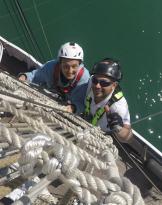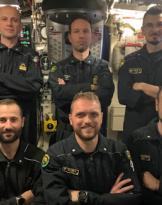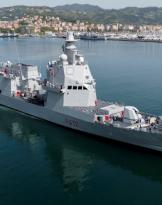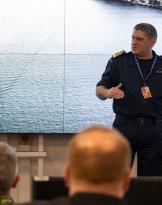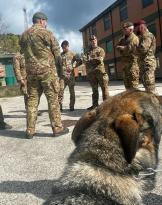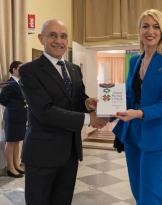Inserted in a unique environmental context in the Mediterranean, the Officers' School of the Navy in La Maddalena represents a point of reference for the category.
Since 1949, the year of its establishment, it has provided ethical, military and technical-professional training of the non-commissioned officers of the Navy, mainly those in the category of pilots, boatswain, engine technicians and harbor pilots of the Coast Guard.
In favor of those who, perhaps, think that the destination at a training institute is a relatively restful commitment, just think that the 174 officers, non-commissioned officers, troops and 110 members of the civilian staff make it possible to provide approximately 18.000 hours of lessons every year to favor of volunteers and graduates who attend basic courses, non-commissioned officers and personnel of other Armed Forces who participate in advanced courses and who are trained and qualified to command and conduct naval vessels and to conduct naval propulsion systems. Overall, there are more than 2.300 young men and women who pass through La Maddalena every year, for a period ranging from a few weeks to several months. Furthermore, since 2020, the influx of visitors has been increasing, with prospects of probable further future growth for a job and career opportunity that is certainly challenging, but extremely fascinating and full of satisfactions.

This also means providing room and board for medium and long periods to those who, administratively, must be "accasermato" (ie those for whom the mission treatment is not foreseen). We are talking about more than 1.000 meals a day, prepared in the canteens of the structure, and small bedrooms, on average with 3, 4 or 5 beds for all visitors. A notable commitment that, in the period of the pandemic, forced us to think of very dynamic solutions in order to guarantee isolation measures for those who had tested "positive" for the virus.
To this is added sporting activity, which is also formative. In addition to the practice of rowing, the Institute has a swimming pool, which is extensively used for staff training and for the issue of lifesaving licenses to visitors.
But the commitment, already important and delicate in itself, of the personnel assigned to the Institute does not end with the military and technical training of the personnel. The School, in fact, also provides logistical, technical and administrative support to the Bodies and Commands in the operational area of Northern Sardinia.
All this without forgetting that the Institute is integrated in a territory that boasts centuries of profitable relations with commercial maritime traffic and the presence of military installations to defend the territory and merchant ships.
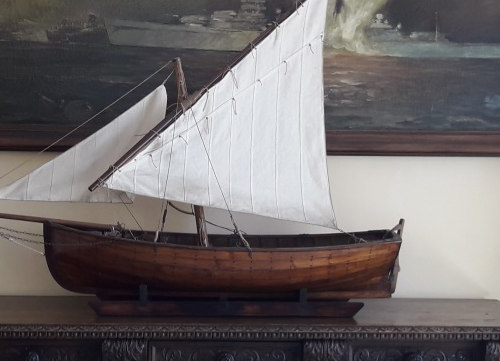
Thanks to the natural defenses represented by the islands of the archipelago, which offer shelter from the strong winds that channel into the Strait of Bonifacio, in fact, since ancient times and for several centuries the area has been an intermediate stop for commercial traffic in the Mediterranean. Even today, interesting finds occasionally take place on its seabed, testifying to the intense attendance from prehistoric times to the Roman Empire and beyond.
Precisely because of this characteristic, La Maddalena was also the object of French expansionist aims, which assigned maritime issues a significant priority. From the tower on the island of Santo Stefano, still well preserved today, on 20 February 1793 the then lieutenant colonel of artillery Napoleon Bonaparte attacked the town with a heavy bombardment, to which the Maddalenini responded by counterattacking, courageously led by Domenico Millelire, and putting an end to the aggression of the transalpines.
Furthermore, between October 1803 and January 1805, the English fleet stopped several times in the calm waters of the Magdalenina bay, from where it was more convenient to monitor the Bonapartist fleet, at anchor in the port of Toulon, from which La Maddalena was only 24 hours of navigation. From these waters Nelson set sail with His British Majesty's ships to pursue the French fleet, an event that led to the battle of 21 October 1805 in Trafalgar. From that time there remain some relics given by Nelson at the end of the penultimate of his eight stops in the archipelago, as a sign of esteem for the inhabitants. It is about two candlesticks and a silver crucifix, accompanied by an autograph letter, now kept in the local diocesan museum, with which Nelson thanked for the hospitality received. The letter of reply from the Maddalenini is now kept in the British Museum.

Since the birth of the unitary state, then, La Maddalena has always seen an important presence of the Navy, both as a national and NATO operational base, and as a capacity to intervene for repairs on the units of the naval squad, thanks to the numerous high level civil and military skills present in the arsenal, until fairly recent times.
Returning to our days, the training of Navy personnel takes place in successive steps. In fact, upon entry, it is essential to provide visitors with the tools for entering the military world and for assimilating the ethical principles of the Armed Force. We then move on to the actual technical training, which is developed in theoretical activity, practical activity in the Institute's workshops and laboratories and in training activities at sea, where visitors learn the procedures and begin to become familiar with the environment in which they will operate.
From a technical point of view, workshops represent the field in which visitors find themselves learning how to use means, materials and machine tools that will be their professional tools throughout their career. Here, then, that those who will deal with refrigeration systems (including air conditioning, which is essential on modern ships, both due to the presence of a highly developed network of electronic equipment and because the units are substantially "closed" towards the external) will be able to know various types of systems and learn how to manage them. Those who, on the other hand, will be enabled to run naval propulsion equipment will be able to "encounter" modern engines of different sizes, fully functional and mounted on specially prepared counters. A training in perfect continuity with the past, when the patrons found themselves working on the engines of steamships as engineers and mechanics (an operational unit was always present in the bay, for the indispensable practical activity of the students, including the outings in sea). A job that was both highly qualifying and very dangerous.
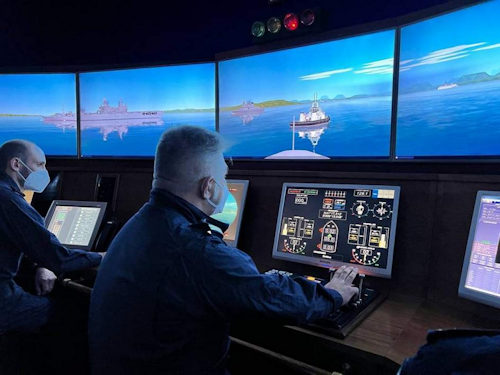 As the commander of the Institute, Captain Mauro Panarello explains, this makes the Institute a important Sardinian technological center, which combines seafaring traditions and practical lessons with the support of theoretical lessons conducted in classrooms set up with most modern teaching tools, from multimedia interactive whiteboards (IWBs) to cameras and communication devices that allow you to follow the lessons remotely (also facilitating "positive" visitors) and to interact "live" with the teacher.
As the commander of the Institute, Captain Mauro Panarello explains, this makes the Institute a important Sardinian technological center, which combines seafaring traditions and practical lessons with the support of theoretical lessons conducted in classrooms set up with most modern teaching tools, from multimedia interactive whiteboards (IWBs) to cameras and communication devices that allow you to follow the lessons remotely (also facilitating "positive" visitors) and to interact "live" with the teacher.
To this is also added a modern dashboard simulator, which allows visitors to practice the procedures for operating naval vessels and with the safety equipment for navigation that they will then find on board. The simulator allows you to create complex situations with several units in "navigation" and different weather and sea conditions. Hours of learning and training that will prove to be very useful once you pass from the simulator to real management at sea, in the restricted and busy waters of the archipelago.
This allows the Institute to adequately prepare the personnel who, at the end of the courses, can be immediately engaged in operational activities on board in the ships of the fleet, already perfectly aware of the equipment with which they will have to work.
We said between tradition and innovation. Alongside the most modern technologies for teaching, the presence of the equipment also installed on the operational units and the traditional military rules, in fact, in La Maddalena, visitors can also make contact with authentic pieces of technological history related to the Navy. After careful research, in fact, a 1750 horsepower FIAT propulsion system dating back to 1942.
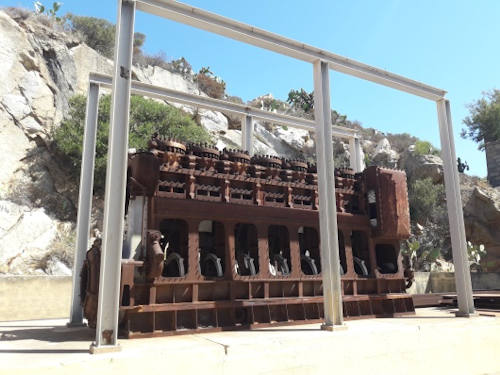
Apparently, it is about one of the very few remaining examples of a two-stroke non-supercharged naval engine in the world, which was installed on submarines from 1939 to 1945 and on all Italian corvettes, operational until the seventies. A project for the enhancement of this historical relic which, perhaps could see the involvement of the manufacturer or private partners to support the initiative.
Between tradition and innovation, therefore, always keeping in mind the integration with the territory, the population and local institutions, with which the Institute has fruitful relationships that allow it to further weld the island's deep ties with the Navy.
Finally, between tradition and innovation, with the affection that many young NCOs will forever have for this island and its population, combined with the fact that the highly professional training that this important technological and training center will allow them to bring high skills and the spirit of the Armed Force around the seas around the world, increasing the prestige of Italy.
Photo: author / Navy


